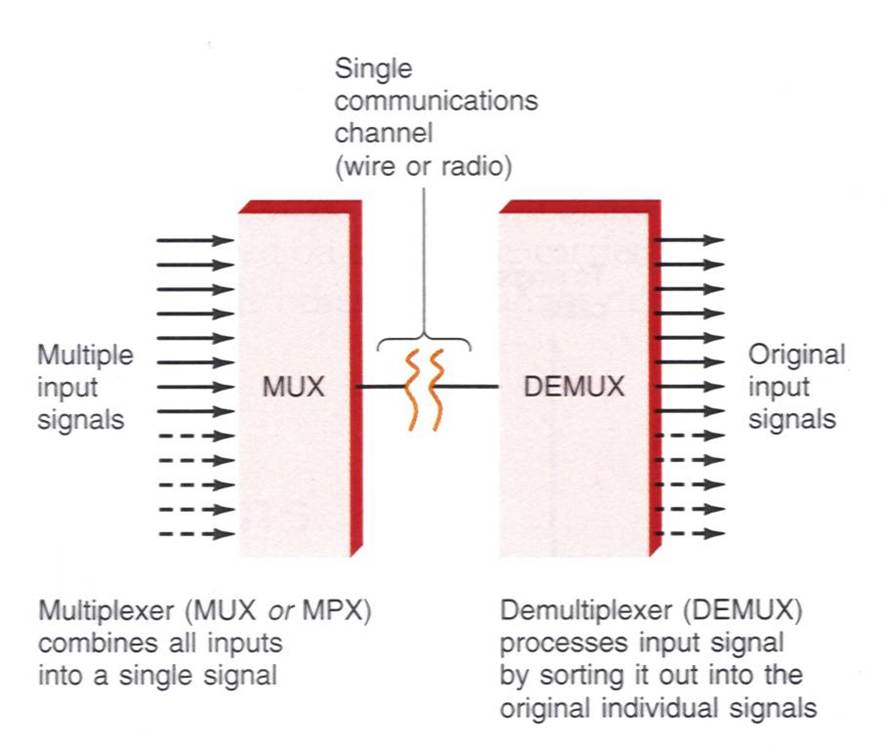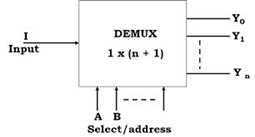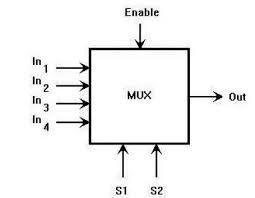The request of unveiling the secrets of MUX and DEMUX recently forces me to give a clearer presentation to those who have great interest in telecommunication field. The following passage will be focused on a brief synopsis to MUX and DEMUX. I hope you can learn something from it.
What are MUX and DEMUX?
In electronics, a multiplexer (or mux) is a device that selects one of several analog or digital input signals and forwards the selected input into a single line. Conversely, the data distributor, known commonly as a demultiplexer or demux for short, is the exact opposite of the multiplexer. It is a device taking a single input signal and selecting one of many data-output-lines, which is connected to the single input.
In electronics, a multiplexer (or mux) is a device that selects one of several analog or digital input signals and forwards the selected input into a single line. Conversely, the data distributor, known commonly as a demultiplexer or demux for short, is the exact opposite of the multiplexer. It is a device taking a single input signal and selecting one of many data-output-lines, which is connected to the single input.
How do They Work?
As we knew before, a multiplexer is often used with a complementary demultiplexer on the receiving end.
As we knew before, a multiplexer is often used with a complementary demultiplexer on the receiving end.

Look at the circuit. It consists of a multiplexer (MUX) at the transmitting side and a demultiplexer (DEMUX) at the receiving side. A multiplexer is a switch that routes the input to one of its many outputs, which are chosen depending on the binary number at its ‘select’ lines. The DEMUX works in the reverse manner to the MUX. Note that to show the synchronization the same pulse train has been given to the select lines—at the transmitter and receiver. Next, I will respectively describe how MUX and DEMUX work.
- MUX
To put it simply, a multiplexer, sometimes called data selector, is a combinational logic circuit that selects one of 2n inputs on the end route to the output. A multiplexer of 2n inputs has n select lines, which are used to select which input line to send to the output. Multiplexers are mainly used to increase the amount of data that can be sent over the network within a certain amount of time and bandwidth. The following picture shows a vivid impression on MUX.
- DEMUX
The demultiplexer is combinational logic circuit that performs the reverse operation of multiplexer. It has only one input, n selectors and 2n outputs. Depending on the combination of the select lines, one of the outputs will be selected to take the state of the input. The demultiplexer converts a serial data signals at the input to a parallel data at its output line as shown below.

Where Should I Use MUX and DEMUX?
According to this working principle, MUX and DEMUX can be used in several fields, such as communication system, computer memory, telephone network, etc. Of which the common utilization is WDM system. MUX and DEMUX play a vital role in CWDM and DWDM system. In WDM system, MUX combines multiple signals onto one single line, then demultiplexer separates the single data stream out to original signals. The use of MUX and DEMUX in WDM is a cost saving method by connecting a multiplexer and a demultiplexer together over a single channel.
According to this working principle, MUX and DEMUX can be used in several fields, such as communication system, computer memory, telephone network, etc. Of which the common utilization is WDM system. MUX and DEMUX play a vital role in CWDM and DWDM system. In WDM system, MUX combines multiple signals onto one single line, then demultiplexer separates the single data stream out to original signals. The use of MUX and DEMUX in WDM is a cost saving method by connecting a multiplexer and a demultiplexer together over a single channel.
After reading this passage, you may have got some basic knowledge about MUX and DEMUX. Fiberstore, a leading WDM modules suppliers, offers a series of WDM modules, such as 40 channel DWDM Mux, 4 channel mux demux, CWDM 8 channel Mux Demux, 8 channel fiber Mux DWDM, CWDM passive Demux, etc.
Originally published at http://www.fiber-optic-solutions.com

评论
发表评论